Steve travels #36: World Nomad Games day 1
The enormous, immaculate, car park is almost completely empty. There’s likewise no queue for security, who apologetically confiscate my two water bottles. At least that reassures me that there will definitely be food inside - why else would they take my water, if not to sell me a replacement?
But there isn’t. The stadium feels pretty empty, there are none of the usual ancillary services operating, and the whole event is quite low key.
I’m a bit early for my event, so I check out two others happening on the floor at the same time.
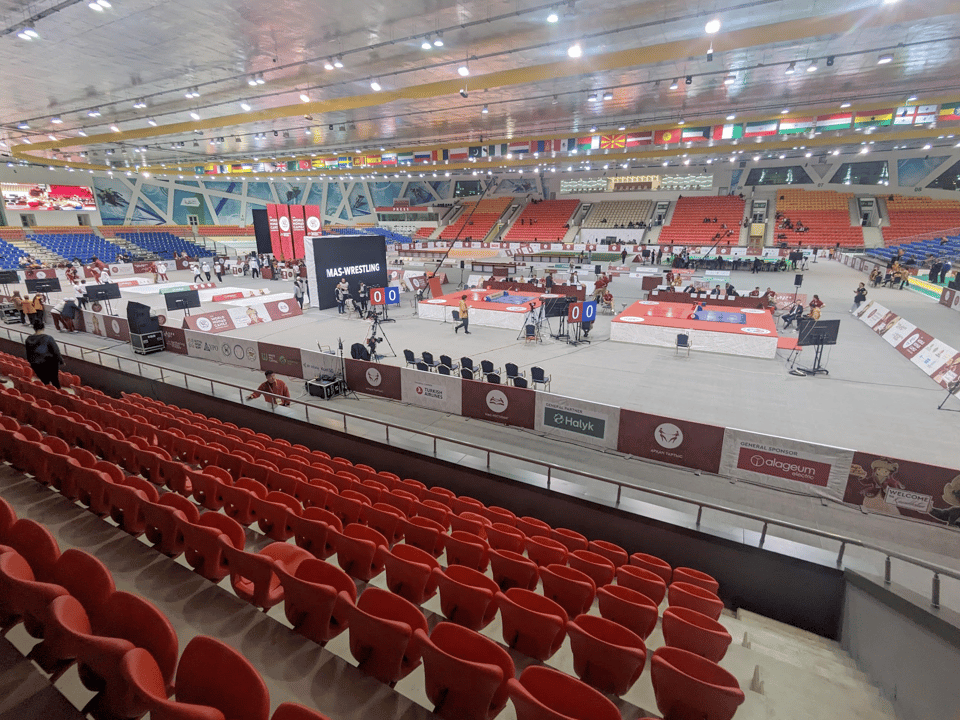
There is Assyk Atu, a game of knucklebones vaguely resembling beer pong both in form and competitor vibe. There’s a big rug, on which a line of knucklebones is arranged. A competitor stands a few metres back behind a line, and throws another knucklebone, hoping to hit. On the very rare occasion they succeed, they then get to move up to the edge of the rug, and keep taking shots until they miss. Otherwise, they run around to find their knucklebone while their opponent at the other end takes their turn, and they swap ends. Mostly they spend their time running from end to end and looking for their knucklebone, which might be under a chair, behind the TV, trapped behind an advertising sign. The whole thing feels very much like something a couple of drunk dudes made up one evening, and is a bit hard to take seriously. It’s not helped by some of the competitors being frankly terrible. I watch the guy from Spain take at least 50 shots in his match against Hungary and not connect a single time.

There is also Korash, one of a number of forms of wrestling at the Games. It looks very similar to judo except you’re not allowed to touch the legs, so there’s no tripping. Every match there is one person in blue and one in green. It looks exciting, but hard to see from my distant vantage point.
I’m here to see Mas Wrestling, which really isn’t anything like wrestling. It’s played on a platform closely resembling a table tennis table with a wooden plank for a net. The players sit on opposite sides of this plank, bracing their feet against it while they grip a short wooden stick the width of a broom handle.
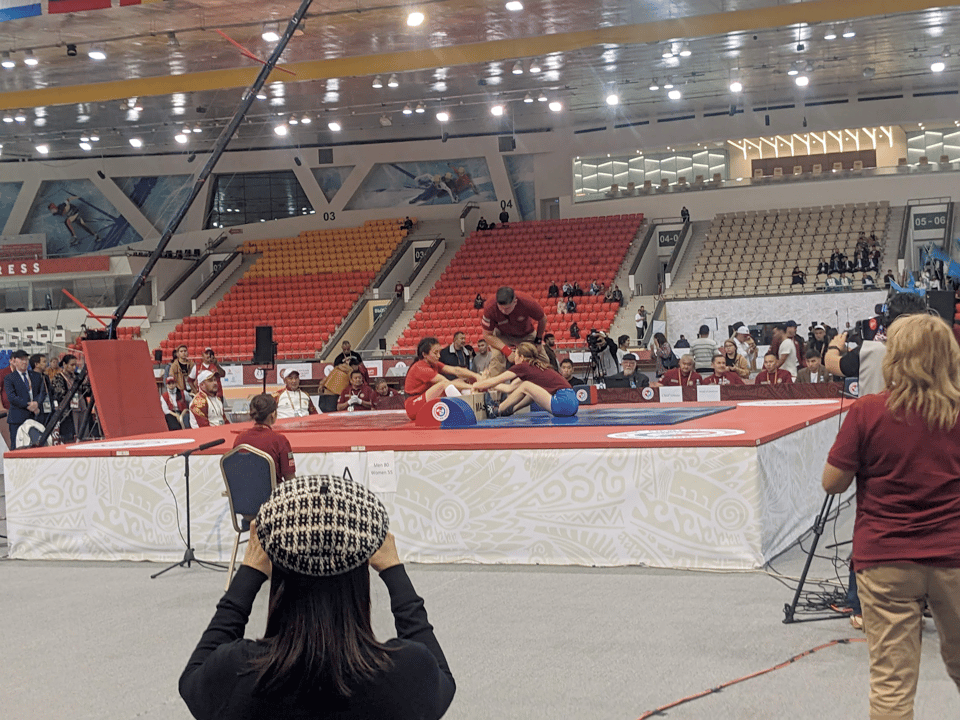
The player in red sits first and chooses to grip the stick in either the middle or at the ends. The player in blue then sits and chooses whether they will have left hand up, right hand down, or the reverse. The player in red has to follow suit, and they thus both grip the stick and start pulling.
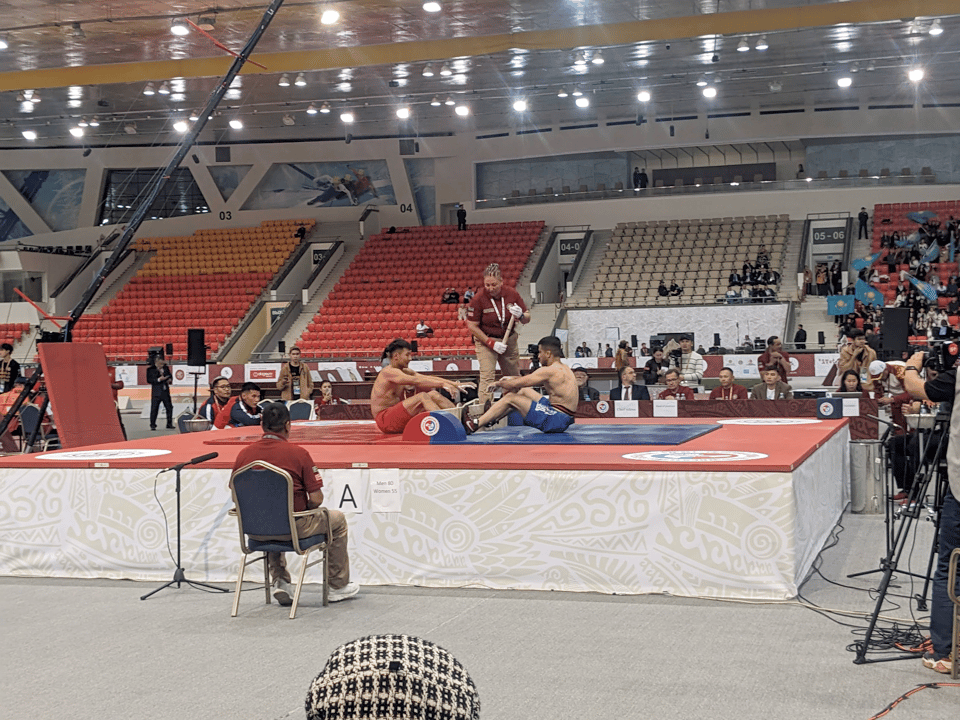
The referee is closely watching, and once everything is in order, and the stick is positioned exactly over the plan, he yells “che” and the game is on. Now they each yank with all their might, twisting and pulling, trying to either get the stick off their opponent, or force their opponent over the plank.
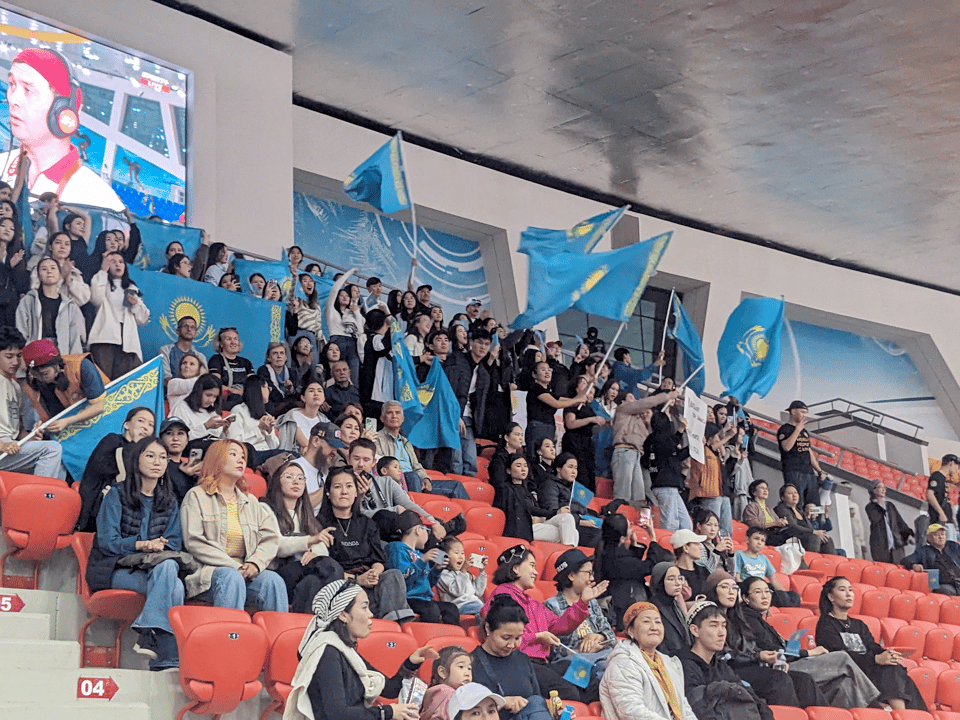
It’s extremely intense to watch, though each bout usually lasts only a few seconds. A match is best of 3 bouts. If there’s a third bout, a large red and blue die is theatrically thrown to randomly choose who gets the choice of grip position. It’s really much more like an arm wrestle or a tug of war than a wrestle, and there’s a kind of primal simplicity to the contest which is pretty gripping for audience and participants alike.
Mostly the position-taking part is quick, but every now then a bout happens where it takes so long for the stick to get correctly positioned they all have to take a break for a few minutes.
On the way out, I’m unreasonably touched by the security guard recognising me and handing me the two water bottles he took off me earlier, unprompted.
I get back to my Astana-critique, grumbling my way across what is by far the least interesting “botanic gardens” I have ever seen. Long, straight pedestrian paths, large single-species plantations and a total lack of any interesting details are a complete contrast to Tashkent’s Eco-Park.
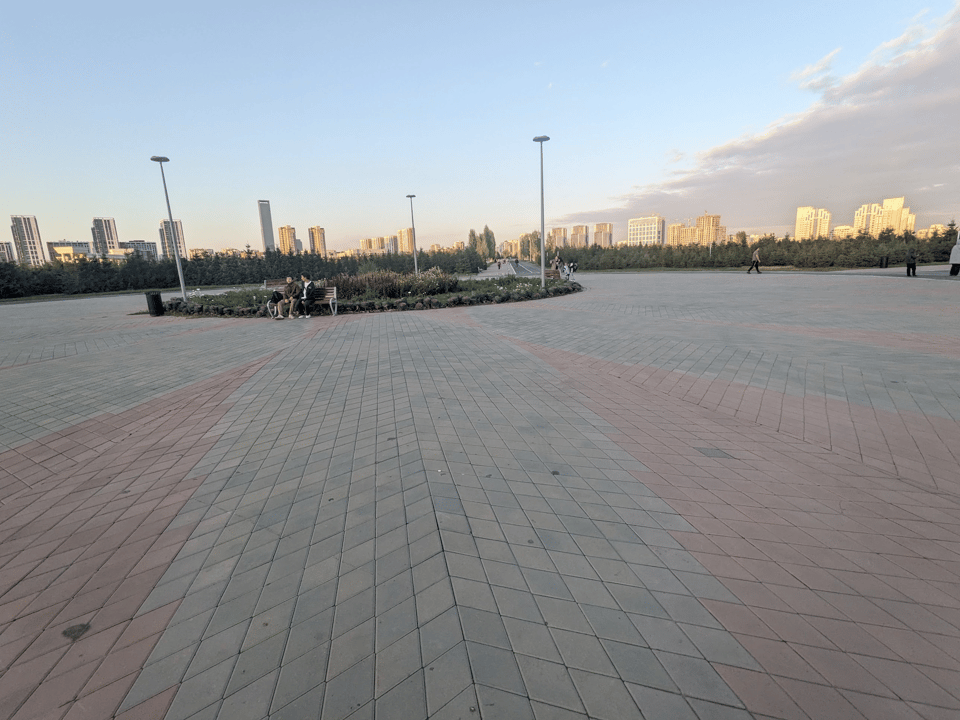
It feels a bit like someone who has only ever played Sim City and never actually been a pedestrian was suddenly given a budget of hundreds of billions of dollars to build a city. It’s a plan that probably looks good on paper, but everything is just such a long walk. I’m a bit surprised not to see more than a couple of cyclists, but I suspect it’s because the perfect-looking bike paths don’t actually form a useful network to anywhere.
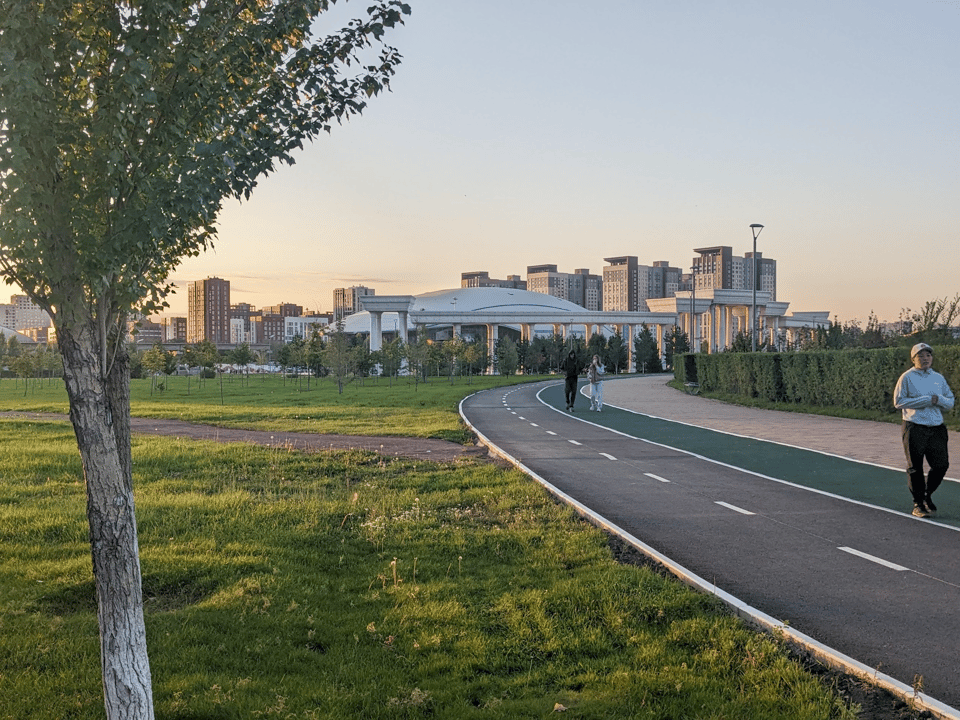
I didn’t like Bishkek’s rampant traffic, perennially in-construction aesthetic, and generally chaotic and unplanned energy, but I didn’t exactly begrudge it either. Sometimes things grow in a weird way and you don’t get a great result. But Astana feels like it should have known better. So much of it was built in the last 30 years, with the benefit of planning and budget. It could have been nice, and fun, and interesting, and enjoyable, but at every turn they went for “impressive” instead.
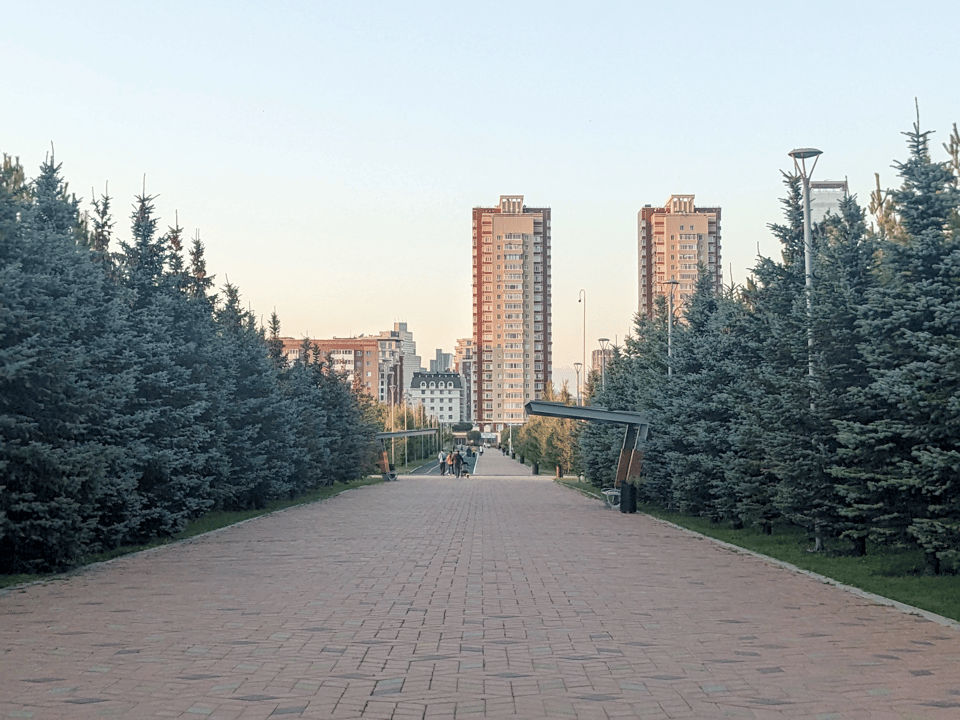
It might be a long four days.